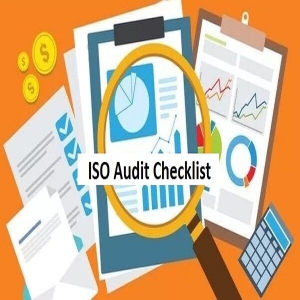Most Five Suggestions to Help You Prepare an ISO Audit Checklist
Posted by sarah on December 11th, 2023
An ISO audit is a review of your organization's conformity with one of the International Organization for Standardization (ISO) standards. ISO is a non-governmental organization headquartered in Geneva, Switzerland that creates international standards and control frameworks to guide industry best practices ranging from information security to car seat safety. ISO is committed to supporting continual improvement, and each standard is reviewed every five years. An audit compares your company's systems to any ISO standard; in addition to compliance, a few standards can be ISO certified through third-party audit, including:
- ISO 9001: This standard is for Quality Management System
- ISO 22000: This standard is for the Food Safety and Management System (FSMS)
- ISO 14001: This standard is for Environmental Management System (EMS)
- ISO 45001: This standard is for the Occupational Health Safety Management System (OHSAS)
- ISO 27001: This standard is for Information Security Management System (ISMS)
- ISO 50001: This standard is for Energy Management Systems (EnMS)
- ISO 13485: This standard is for Medical Devices
The difference between ISO certification and ISO compliance is that ISO compliance pertains to implementing practices, business processes, and policies that adjust with one or more standards. ISO certification entails all of the above, as well as a formal third-party audit by authorized ISO auditors. Nonetheless, ISO compliance might still include audits, but they may be handled by internal auditors rather than external auditors.
Five Suggestions to Help You Prepare an ISO Audit Checklist
Any type of ISO audit has its peculiarities, and risk, audit, and compliance specialists have their preferences.
- Establish Your Objectives: Before starting any significant project, it's a good idea to define your objectives and expected outcomes. It might be difficult to comprehend and express why your organization is doing all of this work if there is no clear path to proceed. If you want to gain certification, you should keep it in mind when creating your audit timetable. Certification can take longer than compliance alone, particularly when conducting a gap analysis and mitigating nonconformities. Knowing your certification aim will allow you to focus your efforts and save time and money during ISO audits.
- Create an Audit Schedule: Make a schedule for your audits, including a timeline for certification if that is your aim, and stick to it. Break down big project goals into smaller milestones and delegate activities to competent persons with the necessary competencies. Begin with your internal audit schedule, add flexibility to complete projects or minimize difficulties, and work your way up to an estimated timeline for engaging a certifying organization.
- Create Audit Checklists: Audit checklists assist you through the audit process according to the ISO guidelines you are employing. In broad strokes, the audit checklist ensures that you understand how the audit fits into the larger aims and context of your firm. It covers each component of the specific ISO standard for which you seek compliance in-depth and examines whether you are meeting those standards or need to modify your systems, processes, or products. It is critical to update audit checklists on a regularly to stay on top of new standards and changes in best practices.
- Organize Yourself: If you let a third-party inspector into your workplace, make sure it is well-organized and clean. Maintaining effective document control and having your records ready for examination can assist your auditor in speeding the process and providing the best possible suggestions for improvement. After all, a lack of evidence might delay your audit, so being able to discover what you need when you need it can make the audit process go more smoothly.
- First, do Internal Audits: Again, internal auditing is the greatest way to prepare for an external, certification, or surveillance audit. Auditors want to know how you're progressing towards your goals and how you're developing your systems to meet ISO requirements. An internal audit will begin that process by demonstrating to your auditors that your organization is serious about ISO compliance, as well as preparing the firm for questions and demands that may arise during an external audit.
Which ISO Standards Are Applicable to Information Security?
The ISO 27000 family of standards, specifically ISO 27001, pertain to Information Security Management Systems (ISMS); this family of standards provides a detailed overview of how to develop, assess, and maintain a secure ISMS for your organization, preventing breaches and data leaks, optimizing your cybersecurity implementation, and ensuring compliance with stringent data privacy laws such as GDPR. ISO 27001 audit checklist for Information Security Management Systems is a common ISO document that is used for rapid audits around the world. ISO 27001:2022 Checklist aids in the verification of any organization's Information Security Management System, allowing the organization to pass any ISO certifying body's information security system audit.
Source Link: https://certificationauditchecklist.wordpress.com/2023/12/11/five-suggestions-to-help-you-prepare-an-iso-audit-checklist/



